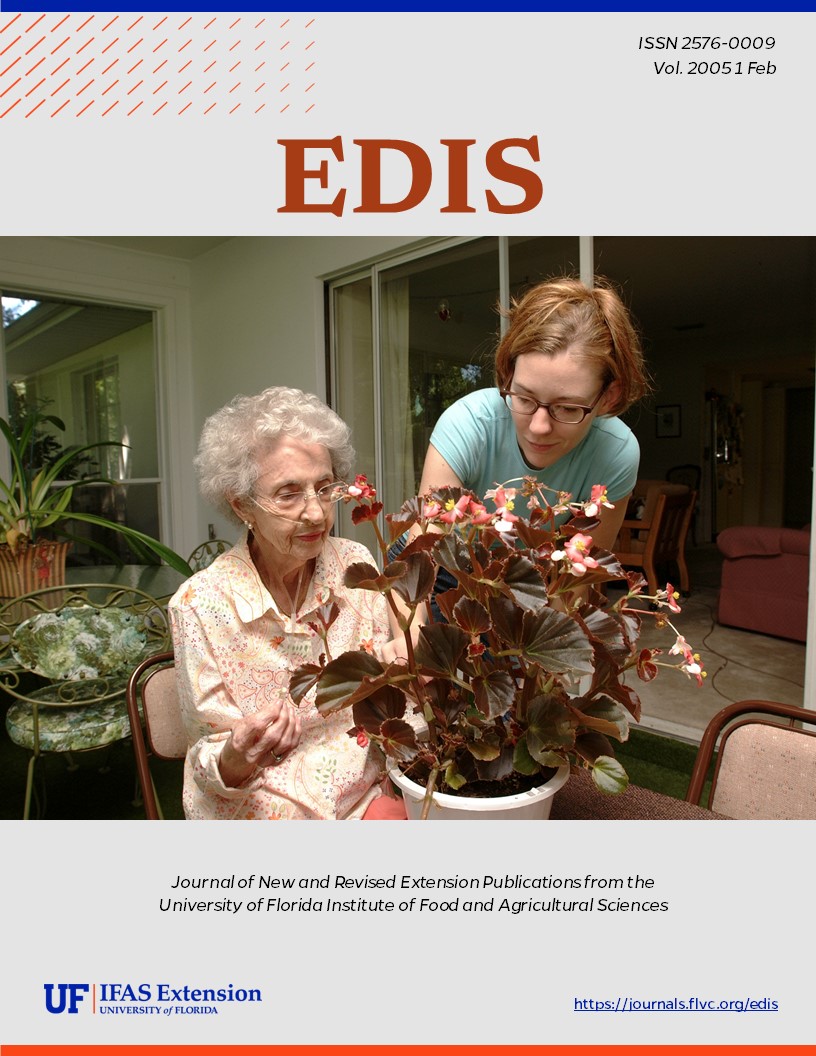Abstract
The western drywood termite, Incisitermes minor (Hagen), is the most common structure-infesting drywood termite in the southwestern United States. Originally described as Kalotermes minor by Hagen (1858), I. minor was reclassified into the genus Incisitermes by Krishna (1961). In California, Incisitermes minor infestations are still sometimes referred to by some pest control operators as "Kalos" and designated with a "K" on termite inspection reports. Currently, there is only one Kalotermes species in the United States (Kalotermes approximatus (Snyder), found in Florida and the southeastern U.S. north to Virginia). Some members of the Kalotermitidae are called drywood termites because colonies live entirely within sound, dead, dry wood. Drywood termites do not require any contact with the ground. This document is EENY-248, one of a series of Featured Creatures from the Entomology and Nematology Department, Florida Cooperative Extension Service, Institute of Food and Agricultural Sciences, University of Florida. Published: November 2001. Revised: December 2005.
References
Becker VG. 1969. Rearing and testing methods in the laboratory, pp. 351-385. In K. Krishna and F.M. Weesner [eds.], Biology of Termites, Vol I. Academic Press, New York. https://doi.org/10.1016/B978-0-12-395529-6.50015-5
Grace JK, Cutten GM, Scheffrahn RH, McEkevan DK. 1991. First infestation by Incisitermes minor of a Canadian building (Isoptera: Kalotermitidae). Sociobiology 18:299-304.
Hagen HA. 1858. Monographie der termiten. Part 2. Linnaean Ent. 12: 1-342.
Hickin NE. 1971. Control of drywood termites, pp. 169-186. In Hickin NE, Termites -- A World Problem. Hutchinson & Co., Ltd., London.
Harvey PA. 1934. Biology of the dry-wood termite, pp. 217-233. In Kofoid CA, Light SF, Horner AC, Randall M, Herms WB, Bowe EE [eds.], Termites and Termite Control. University of California Press, Berkeley, CA.
Hathorne KT, Zungoli PA, Benson EP, Bridges WC. 2000. The termite (Isoptera) fauna of South Carolina. Journal of Agricultural and Urban Entomology 17: 219-229.
Krishna K. 1961. A generic revision and phylogeny of the family Kalotermitidae (Isoptera). Bulletin of the American Museum of Natural History 122: 303-408.
Lewis VR, Haverty MI. 1996. Evaluation of six techniques for control of the western drywood termite (Isoptera: Kalotermitidae) in structures. Journal of Economic Entomology 89: 922-934. https://doi.org/10.1093/jee/89.4.922
Luykx P. 1986. Termite colony dynamics as revealed by the sex- and caste-ratios of whole colonies of Incisitermes schwarzi Banks (Isoptera: Kalotermitidae). Insectes Soc. 33:221-248. https://doi.org/10.1007/BF02224243
Messenger MT, Scheffrahn RH, Su N-Y. 2000. First report of Incisitermes minor (Isoptera: Kalotermitidae) in Louisiana. Florida Entomologist 83: 92-93. https://doi.org/10.2307/3496233
Scheffrahn RH, Mangold JR, Su N-Y. 1988. A survey of structure-infesting termites of peninsular Florida. Florida Entomologist 71: 615-630. https://doi.org/10.2307/3495021
Scheffrahn RH, Su N-Y, Chase JA, Forschler BT. 2001. New termite (Isoptera: Kalotermitidae, Rhinotermitidae) records from Georgia. Journal of Entomological Science 36: 109-113. https://doi.org/10.18474/0749-8004-36.2.109
Unless otherwise specified, articles published in the EDIS journal after January 1, 2024 are licensed under a Creative Commons Attribution-NonCommercial-NoDerivs 4.0 International (CC BY-NC-ND 4.0) license.

